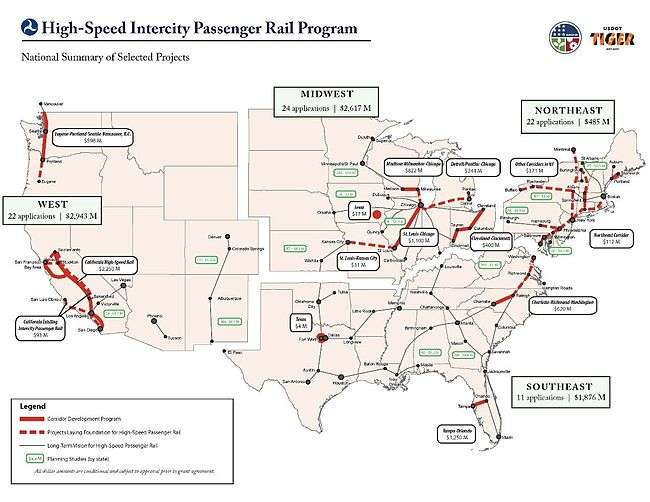Intermodal Surface Transportation Efficiency Act
.svg.png) | |
| Long title | An Act to develop a national intermodal surface transportation system, to authorize funds for construction of highways, for highway safety programs, and for mass transit programs, and for other purposes |
|---|---|
| Nicknames | ISTEA |
| Enacted by | the 102nd United States Congress |
| Citations | |
| Public law | Pub.L. 102–240 |
| Statutes at Large | 105 Stat. 1914 |
| Codification | |
| Titles amended |
15 U.S.C.: Commerce and Trade, 23 U.S.C.: Highways, 26 U.S.C.: Internal Revenue Code, 33 U.S.C.: Navigation and Navigable Waters, 49 U.S.C.: Transportation |
| Legislative history | |
| |
The Intermodal Surface Transportation Efficiency Act of 1991 (Public Law 102-240; ISTEA, pronounced Ice-Tea) is a United States federal law that posed a major change to transportation planning and policy, as the first U.S. federal legislation on the subject in the post-Interstate Highway System era.
Objective
The Act presented an overall intermodal approach to highway and transit funding with collaborative planning requirements, giving significant additional powers to metropolitan planning organizations. Signed into law on December 18, 1991 by President George H. W. Bush, it expired in 1997. It was preceded by the Surface Transportation and Uniform Relocation Assistance Act of 1987 and followed by the Transportation Equity Act for the 21st Century (TEA-21) in 1998, the Safe, Accountable, Flexible, Efficient Transportation Equity Act: A Legacy for Users (SAFETEA-LU) in 2005, and the Moving Ahead for Progress in the 21st Century Act (MAP-21) in 2012. ISTEA also provided funds for non-motorized commuter trails; the first trail to be so funded was the Cedar Lake Regional trail that was built in 1995 in Minneapolis, Minnesota.
High Priority Corridors
ISTEA defined a number of High Priority Corridors, to be part of the National Highway System. After various amendments from other laws, this is a list of the Corridors:
High-speed rail corridors

The legislation also called for the designation of up to five high-speed rail corridors. The options were studied for several months, and announced in October 1992. The first four were announced by United States Secretary of Transportation Andrew Card, while the last was announced by Federal Railroad Administration head Gil Carmichael.[1]
- October 15, 1992: The Midwest high-speed rail corridor with three links from Chicago, Illinois to Detroit, Michigan, St. Louis, Missouri, and Milwaukee, Wisconsin.
- October 16, 1992: The Florida high-speed rail corridor linking Miami with Orlando and Tampa.
- October 19, 1992: The California high-speed rail corridor linking San Diego and Los Angeles with the San Francisco Bay Area and Sacramento via the San Joaquin Valley.
- October 20, 1992: The Southeast high-speed rail corridor connecting Charlotte, North Carolina, Richmond, Virginia, and Washington, D.C..
- October 20, 1992: The Pacific Northwest high-speed rail corridor linking Eugene and Portland, Oregon with Seattle, Washington and Vancouver, British Columbia, Canada.
However, there was not significant funding attached to these announcements: $30 million had been allocated to several states by 1997 to improve grade crossings,[2] but that was a very tiny amount in comparison to the billions required for a true high-speed network. Aside from a few places in California and the Chicago–Detroit Line, most areas outside the Northeast Corridor continued to be limited to 79 mph (127 km/h) until $8 billion from the American Recovery and Reinvestment Act of 2009 was distributed in January 2010.[3]
Jeff Morales one of the principal drafters of this bill, is currently serving as CEO of the California High-Speed Rail Authority, which is currently constructing a high-speed rail line along the route originally proposed in this bill.[4]
Airbags
The Intermodal Surface Transportation Efficiency Act of 1991 also mandated that passenger automobiles and light trucks built after September 1, 1998 to have airbags installed as standard equipment for the driver and the right front passenger.[5][6]
References
- ↑ "Chronology of High-Speed Rail Corridors". Federal Railroad Administration, Department of Transportation. 7 July 2007. Archived from the original on 30 November 2009. Retrieved 16 March 2014.
- ↑ "High Speed Ground Transportation for America - CFS Report To Congress". Federal Railroad Administration. September 1997. Archived from the original on 25 August 2009. Retrieved 16 March 2014.
- ↑ Rosenberg, Zach (1 February 2010). "At Long Last, Clear Messages for High-Speed Rail". Wired Blogs. Retrieved 16 March 2014.
- ↑ The Registry-San Francisco. "California High-Speed Rail Authority Hires World Recognized CEO".
- ↑ Office of Research and Development (21 June 2001). "Air Bag Technology in Light Passenger Vehicles" (PDF). U.S. NHTSA. p. 1. Retrieved 16 March 2014.
- ↑ "Sep 1, 1998: Federal legislation makes airbags mandatory". history.com. Retrieved 16 March 2014.
External links
- H.R.2950 (Public Law No: 102-240) - corridors are in section 1105
- A Guide to Metropolitan Transportation Planning Under ISTEA - How the Pieces Fit Together (USDOT)
- "FHWA - NHS High Priority Corridors". Federal Highway Administration - United States Department of Transportation. September 1996. Archived from the original on 10 April 2007. Retrieved 16 March 2014.